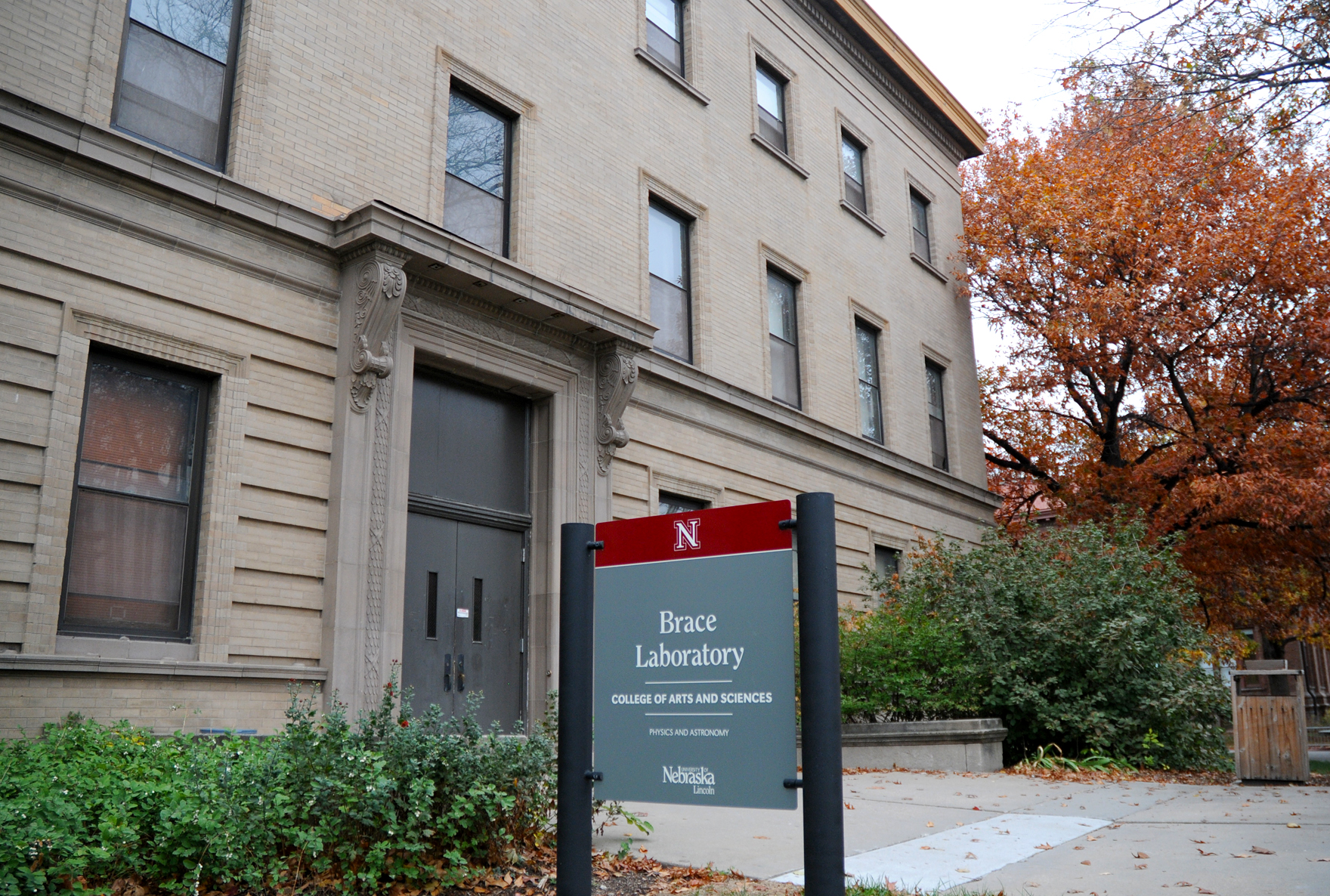
UNL’s second oldest building may be given a new life under a proposal headed to the Board of Regents for approval. The historic three-story building, which opened in 1906, is slated for an overhaul in part to accommodate UNL’s burgeoning life sciences programs as well as other academic needs.
Three state-of-the-art lower division life sciences laboratories, support space, and a large auditorium are among the proposed plans that will be considered today by the NU Regents. The meeting agenda and a link to listen live are at http://nebraska.edu/board.html.
Until 2010, Brace was one of three buildings housing the Department of Physics and Astronomy. The department moved that year to the new Jorgensen Hall near 16th and W streets. The decision was made then to retain Brace because of its historic nature, although no specific uses were identified until recently.
Demand in life sciences, meanwhile, has grown significantly, in part because of growing interest in pre-health profession tracks. Between fall 2004 and fall 2011, enrollment in biological sciences lab courses increased by 33 percent. By comparison, total UNL undergraduate enrollment increased by 14.5 percent.
Along with that growth, the implementation of a new core curriculum for all life sciences students at UNL will begin in fall 2013. Development of the new core has been a team effort by the colleges of Arts and Sciences, Education and Human Sciences, and Agricultural Sciences and Natural Resources, that will embrace the newest pedagogies in life sciences education.
The School of Biological Sciences is at or near space limits in several required and service courses. If successful in reaching the chancellor’s goal of increasing enrollment by 20 percent by 2017, Biological Sciences can expect to reach a minimum of 840 majors and very likely more.
“We’re running biology labs with lab utilization rates averaging well over 100 percent and the amount of space per student is substantially below national benchmarks,” said David Manderscheid, dean of the College of Arts and Sciences. “We need more space. It’s pure and simple.”
Besides accommodating growth, the new labs will open opportunities to enhance the learning experience for students and that’s exciting, said Valery Forbes, director of the School of Biological Sciences.
Because of overcrowding and the antiquated classroom environment, the current labs in Manter Hall limit the ability to implement the latest pedagogical methods proven effective for student learning, Forbes said. These teaching facilities have not been renovated since Manter Hall was built in the 1970s. The renovation of Brace Hall is a critical first step in helping to meet expected enrollment demands.
Instruction today depends on interactive, inquiry-based learning that arms students with the skills to think through and solve problems independently and while working in teams, she said.
“The renovation will allow us to design wet labs and interactive classrooms in which we can experiment with the newest forms of biology instruction,” Forbes said. “Having access to state-of-the-art equipment and instruction will pay dividends for students down the line, both in better preparing them for more advanced study and for their future career pursuits.”
Also in the plans are specialized classrooms to support advanced technologies and collaborative learning as part of the Technology Transforming Teaching initiative. Its goal is to explore, research, test and deploy new instructional technologies for use in classrooms and research. The initiative is a collaborative effort involving Information Services and the Office of Academic Affairs.
The renovation of Brace Hall is being funded by the Office of the President, the Office of the Chancellor, and Office of the Senior Vice Chancellor for Academic Affairs.
For more information about Brace Laboratory, go to http://go.unl.edu/szv.
— Jean Ortiz Jones, University Communications